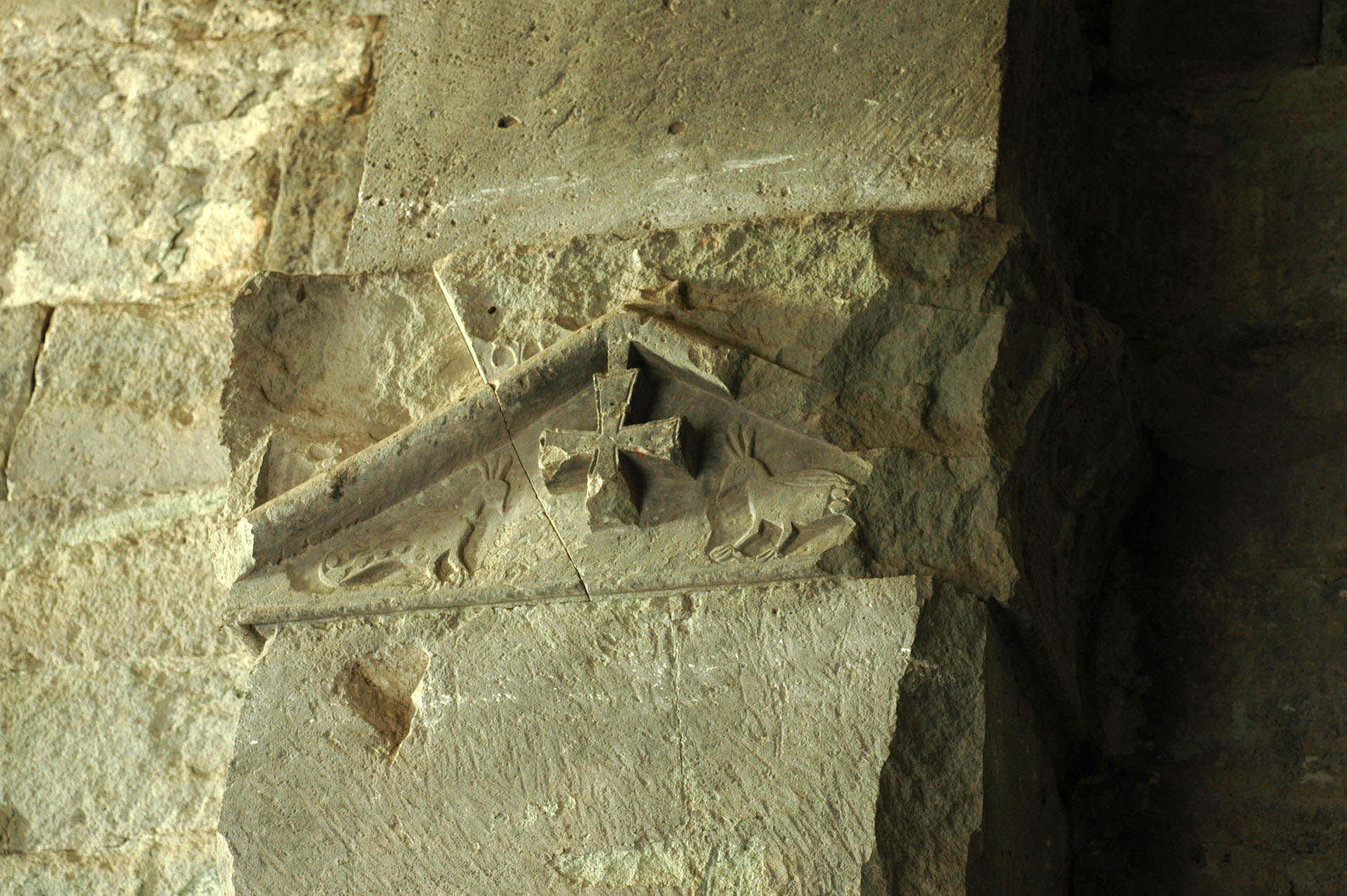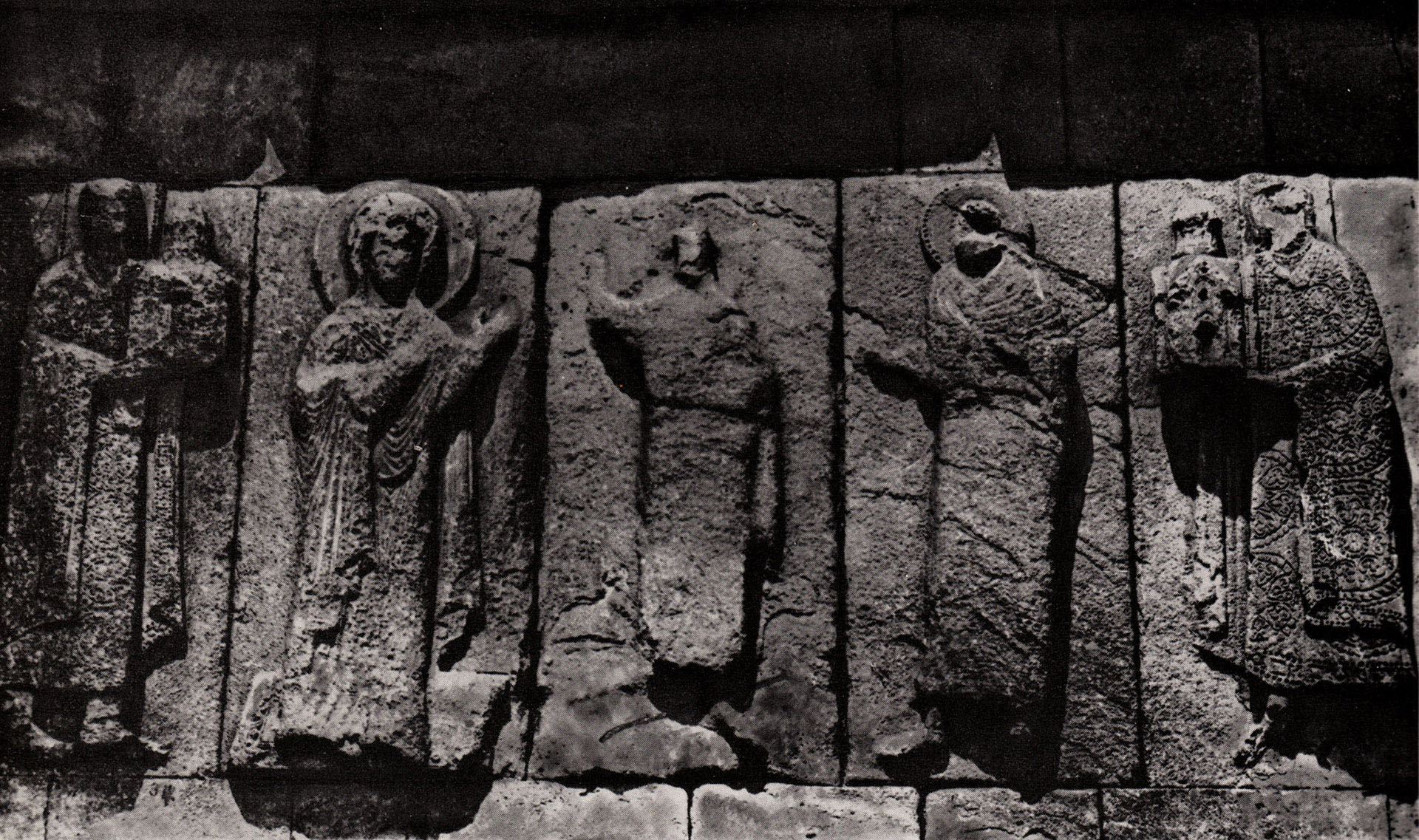
Feel free to add tags, names, dates or anything you are looking for


Medieval Georgian sculpture was formed in the bosom of local culture under the influence of Hellenistic and Persian, as well as the East Christian artistic traditions. In medieval Georgia, like other Orthodox Christian countries, developed relief sculpture. The reliefs, with a few exceptions, adorned the facades of churches.

The earliest preserved reliefs are to be found in the Bolnisi Sioni (478-493).
These reliefs belong to the first stage of the development of medieval Georgian
monumental relief sculpture. The carvings mainly decorate the church interior and
embellish capitals of engaged columns and pillars. The relief compositions combined
zoomorphic images with vegetal motifs and geometric patterns. Crosses inscribed in
medallions are inserted in the relief inscriptions of the facades.

The portrait of Demetre Vipatos, Mtskheta Jvari church, East façade, 585/7-604/5

Kobul-Stephanoz Eastern façade
Mtskheta Jvari church, Eastern façade
The reliefs adorning the church of the Holy Cross (Jvari) in Mtskheta(585/7-604 /5) are striking examples of medieval sculpture. The church facades depict carved images of the commissioners, local governors, eristavi of Kartli (a principality of eastern Georgia). The dedication of the church is emphasized by the relief composition showing the exaltation of the cross, which is placed above the main, south entrance of the church. Carved images are harmoniously integrated into the structure and are characterized by stylistic features that reflect the Classical artistic tradition.

Kachagani cross, 6th century
Stone crosses, which are original type of cult objects, dating back to the 6th - 7 th cc, are extensively decorated with relief compositions. The free-standing stone crosses, perceived as symbols of the country’ s Christianization, are covered with carved ”icons” depicting Christological compositions.

Ashot Kourapalates, Opiza, 9th century
The 8-th-9 th cc. was a "transitional" period in Georgian art, characterized with new forms of expression. The relief representation of Ashot Kourapalates from Opiza (9th c.) is among the significant works of this epoch.

Ashot Kukhi, Tbeti, 10th century
From the 10th century onward, was a period of particular development of relief sculpture in Georgia. The image of Ashot Kukhi, the commissioner of Tbeti cathedral (early 10th c.) is a typical product of this time. The plastic treatment of forms and volumes demonstrate the tendency toward “separation” of the figure from the surface and the creation of a round sculpture.

Deesis with David Magistros and Bagrat Eristavt-Eristavi, Oshki. 10th
century
From the second half of the 10th century, the main principles of the
decoration of church facades with relief sculptures were elaborated. These principles are
evidenced in the churches and cathedrals at Tao-Klarjeti (the south-west historical region
of Georgia). The reliefs of Oshki and Khakhuli churches have highly impressive sculptural
façade decoration. The south façade of Oshki bears an original composition with
representations of the donors Bagrat Eristavt-Eristavi and David Magistros, integrated into
the composition of the Deesis, depicting Christ flanked by the supplicating Virgin and St.
John the Baptist.

Ascenssion, Nikortsminda. 1010-1014
At the beginning of the 11th century sculptural decoration of church facades reached its highest artistic and technical level. Reliefs from this epoch demonstrate that they had become the essential element of churches. One of the best examples of relief decorations from this epoch can be observed at Nikortsminda Cathedral (ca. 1014). The well elaborated program of façade reliefs is a manifestation of the Glory of Christ.

Griffin. Samtavisi. 1030
The 11th century is characterized by churches and cathedrals with complex carved façade decoration. The distribution of reliefs on facades, as well as the treatment of separate images and ornamental motifs contribute to the creation of sophisticated interplay of forms and shapes, which in turn are based on complex theological ideas. The cathedrals of Svetitskhoveli (1010-1029) and Samtavisi (1030) demonstrate the same tendencies.

The Presentation at the Temple, chancel barrier, Sapara, 11th century

Annunciation, chancel barrier, Sapara, 11th century
Along with church facades, carvings adorned sanctuary barriers. The 11th century chancel barriers from the churches of Mgvimevi and Sapara, which are embellished with New Testament compositions, demonstrate the high level of craftsmanship and artistic achievements of the epoch.
From the 12th century onwards, a shift can be retraced from carved figurative representations to ornamentation. Geometric and vegetal ornamentation creates a sophisticated interlace of shapes and patterns (e.g. the church of Pitareti, 1213-1222; the church of St. Saba in Sapara, late 13th c.)
During the following centuries, the complicated political and economic situation in Georgia suspended the development of architecture and the plastic arts accordingly. The 17th century was a period of relative prosperity in the country and a revival of traditional arts, including relief carving could be observed. Despite the eclectic character of reliefs from this time, significant examples of façade sculpture are still to be found (e.g. Ananuri church of the Dormition (1689), Sagarejo church of the Holy Apostles St. Peter and Paul, 17th -18th cc.)